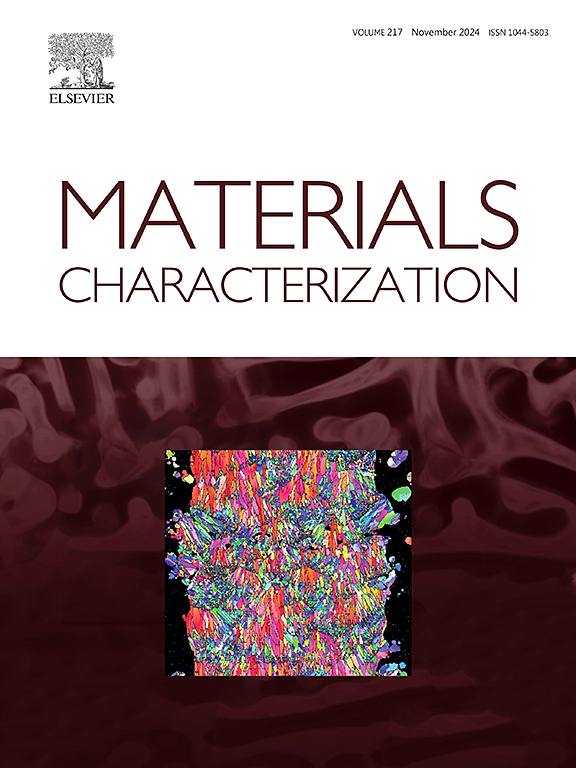Investigation of material flow mechanisms and interface bonding in probeless friction stir spot welding of 2198-T8 aluminum-lithium alloy
IF 4.8
2区 材料科学
Q1 MATERIALS SCIENCE, CHARACTERIZATION & TESTING
引用次数: 0
Abstract
The probeless friction stir spot welding (P-FSSW) process of 2198-T8 aluminum‑lithium alloy was investigated to elucidate material flow mechanisms and their influence on joint interface bonding. A coupled numerical simulation and texture analysis approach revealed the complex flow behavior. Tracer particle simulations demonstrated a laminar, radially inward spiral flow pattern in the stirring zone, with weaker flow intensity along the thickness direction due to thermomechanical gradients. Electron backscatter diffraction (EBSD) analysis indicated that dynamic recrystallization was the primary mechanism for grain refinement, creating fine equiaxed grains and forming shear-dominated textures ({111} 〈110〉) that reflect localized material flow trajectories. The bonding mechanism at the joint interface was driven by the fracture of the surface oxide layers, atomic diffusion, and dynamic recrystallization, which facilitated void closure and grain coalescence. Grain boundary migration across the interface was observed, resulting in a metallurgical bond. These results provide an in-depth understanding of the coupling between material flow and the evolution of interface bonding. The research emphasizes the critical role of plastic deformation and recrystallization gradients, determined by the extent of downward material flow, in forming defect-free, metallurgically bonded interfaces.
2198-T8铝锂合金无探针搅拌摩擦点焊材料流动机制及界面结合研究
研究了2198-T8铝锂合金无探针搅拌摩擦点焊(P-FSSW)工艺,探讨了材料流动机理及其对接头界面结合的影响。数值模拟与织构分析相结合的方法揭示了其复杂的流动特性。示踪粒子模拟表明,搅拌区呈层流状,径向向内螺旋流动,由于热机械梯度,沿厚度方向流动强度较弱。电子背散射衍射(EBSD)分析表明,动态再结晶是晶粒细化的主要机制,形成了细小的等轴晶,并形成了反映局部物质流动轨迹的剪切主导织构({111}< 110 >)。表面氧化层断裂、原子扩散和动态再结晶驱动了接头界面处的结合机制,促进了孔洞闭合和晶粒聚并。观察到晶界在界面上的迁移,形成了冶金结合。这些结果对材料流动和界面结合演化之间的耦合提供了深入的理解。该研究强调了塑性变形和再结晶梯度在形成无缺陷的冶金结合界面中的关键作用,这取决于材料向下流动的程度。
本文章由计算机程序翻译,如有差异,请以英文原文为准。
求助全文
约1分钟内获得全文
求助全文
来源期刊

Materials Characterization
工程技术-材料科学:表征与测试
CiteScore
7.60
自引率
8.50%
发文量
746
审稿时长
36 days
期刊介绍:
Materials Characterization features original articles and state-of-the-art reviews on theoretical and practical aspects of the structure and behaviour of materials.
The Journal focuses on all characterization techniques, including all forms of microscopy (light, electron, acoustic, etc.,) and analysis (especially microanalysis and surface analytical techniques). Developments in both this wide range of techniques and their application to the quantification of the microstructure of materials are essential facets of the Journal.
The Journal provides the Materials Scientist/Engineer with up-to-date information on many types of materials with an underlying theme of explaining the behavior of materials using novel approaches. Materials covered by the journal include:
Metals & Alloys
Ceramics
Nanomaterials
Biomedical materials
Optical materials
Composites
Natural Materials.
 求助内容:
求助内容: 应助结果提醒方式:
应助结果提醒方式:


